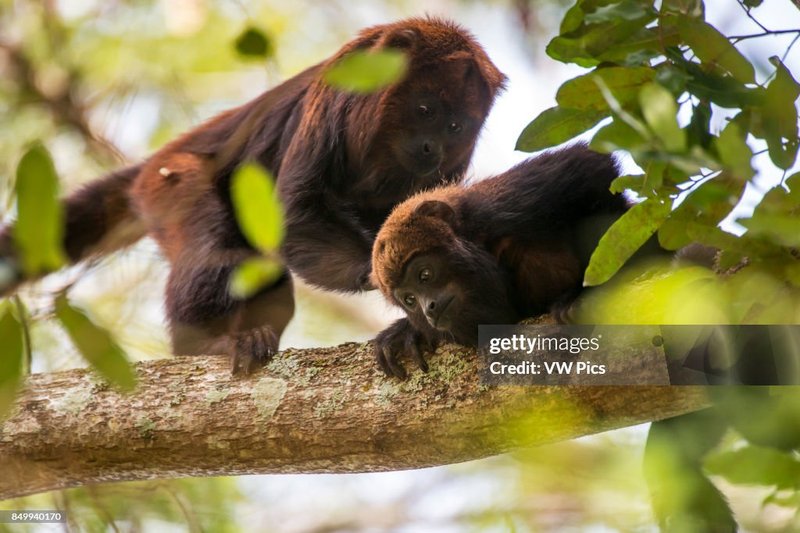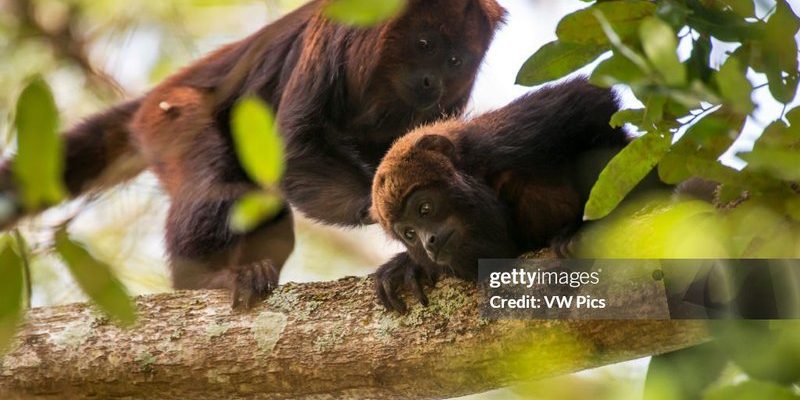
Let’s dive into the world of the Guariba and explore how these monkeys manage to navigate challenges like habitat loss, climate fluctuations, and competition for resources. From their vocal prowess to their dietary flexibility, these primates showcase survival strategies that are as impressive as they are essential. Honestly, it’s like watching a master chef whip up a gourmet meal using only a handful of ingredients!
Understanding the Guariba: Adaptations and Traits
First off, let’s take a closer look at what makes Guaribas so unique. Guaribas, or howler monkeys, are known for their distinctive vocalizations, which can travel for miles through dense forest. Their large throat sac is a key adaptation that allows them to produce these loud calls. This vocal ability helps establish territory and keep in touch with their troop members, acting like a social network in the treetops.
In terms of physical traits, Guaribas are equipped with long limbs and prehensile tails, which they use to swing between branches effortlessly. Picture them like acrobats in the trees! This agility is crucial for navigating their habitat, especially when facing the dangers of predators or competing for food. The combination of their vocal talent and physical adaptations makes them well-suited to their forested homes.
Dietary Flexibility: Eating Smart in a Changing World
You might be surprised to learn that Guaribas are not picky eaters! They primarily eat leaves, fruits, and flowers, which helps them thrive in an environment where food sources can vary dramatically. Think of them as opportunistic diners, always on the lookout for the next best thing on the menu.
When food is scarce, howler monkeys have the ability to adapt their diet to what’s available. This flexibility is essential in harsh conditions. For example, during dry seasons when fruit might be limited, they’ll focus more on leaves, which are more abundant. It’s similar to adjusting a recipe based on what’s in your pantry—always creative and resourceful.
Social Structure: Living in Troops for Survival
Guaribas are social creatures that live in groups, or troops, typically consisting of 10 to 20 individuals. This social structure plays a critical role in their survival. Living in a troop offers numerous benefits, such as increased protection from predators and improved resource sharing. You might say that there’s power in numbers!
Troop dynamics are fascinating, too. Typically led by a dominant male, the social hierarchy helps maintain order and reduce conflicts over food and mates. The bonds within these troops are essential for collaboration during foraging and defending territory against rival groups. It’s like having a family team that works together to secure their survival in a tough world.
Vocalizations: Communication as a Survival Tool
The howler monkey’s distinctive calls are more than just a way to make noise; they’re vital for communication and survival. Their powerful vocalizations can reach up to 3 miles in dense forests, enabling them to communicate with distant troop members. Think of it as a high-tech alarm system, alerting others to danger or signaling the location of food.
These vocal calls serve various functions, from attracting mates to warning off potential threats. In fact, their deep roars can intimidate predators, deterring them from approaching. This unique form of communication underscores their adaptability in harsh environments, showcasing how they use instincts honed over generations to navigate challenges.
Habitat Challenges: Coping with Deforestation
Unfortunately, Guaribas face significant threats in their natural habitats, primarily due to deforestation and habitat loss. As humans encroach on their territories for agriculture and urban development, these monkeys are forced to adapt quickly or risk extinction. It’s a tough reality for many wildlife species today.
In response, Guaribas have shown some resilience. They can often adapt to fragmented habitats, but this comes with huge challenges. They might have to travel further to find food and mates, which increases their vulnerability. Imagine trying to find a good restaurant in a city you don’t know well—it’s not easy when everything’s scattered!
Conservation Efforts: Hope for the Future
Fortunately, there are ongoing conservation efforts aimed at protecting Guaribas and their habitats. Organizations work to establish protected areas, promote sustainable land-use practices, and raise awareness about the importance of these monkeys in their ecosystems. It’s like building a safety net for these remarkable creatures.
Community engagement is also crucial. Local populations often play an important role in the conservation efforts. By fostering understanding and respect for Guaribas, communities can help create a harmonious coexistence between humans and wildlife. Think of it as teaming up to ensure that everyone—humans and monkeys alike—can thrive.
The Role of Climate Change on Guariba Survival
Lastly, climate change poses another challenge for Guaribas. Changes in temperature and rainfall patterns can disrupt their food sources and habitats. It’s a bit like trying to keep your garden alive when the weather keeps changing; you have to adjust and find new ways to cope.
While Guaribas have been known to adapt to some changes, the speed at which climate change is occurring leaves little room for these primates to adjust fully. As temperatures rise and weather patterns shift, their survival depends on a delicate balance of adaptability and environmental stability.
In conclusion, Guaribas, or howler monkeys, are a testament to nature’s resilience. They’ve developed remarkable strategies to survive in harsh environments, from their social structures to their vocalizations. However, as they face modern challenges like habitat loss and climate change, it’s crucial for us to pay attention and take action. By learning about these incredible creatures, we can better appreciate the delicate balance of our ecosystems and the role we play in preserving them for future generations.

